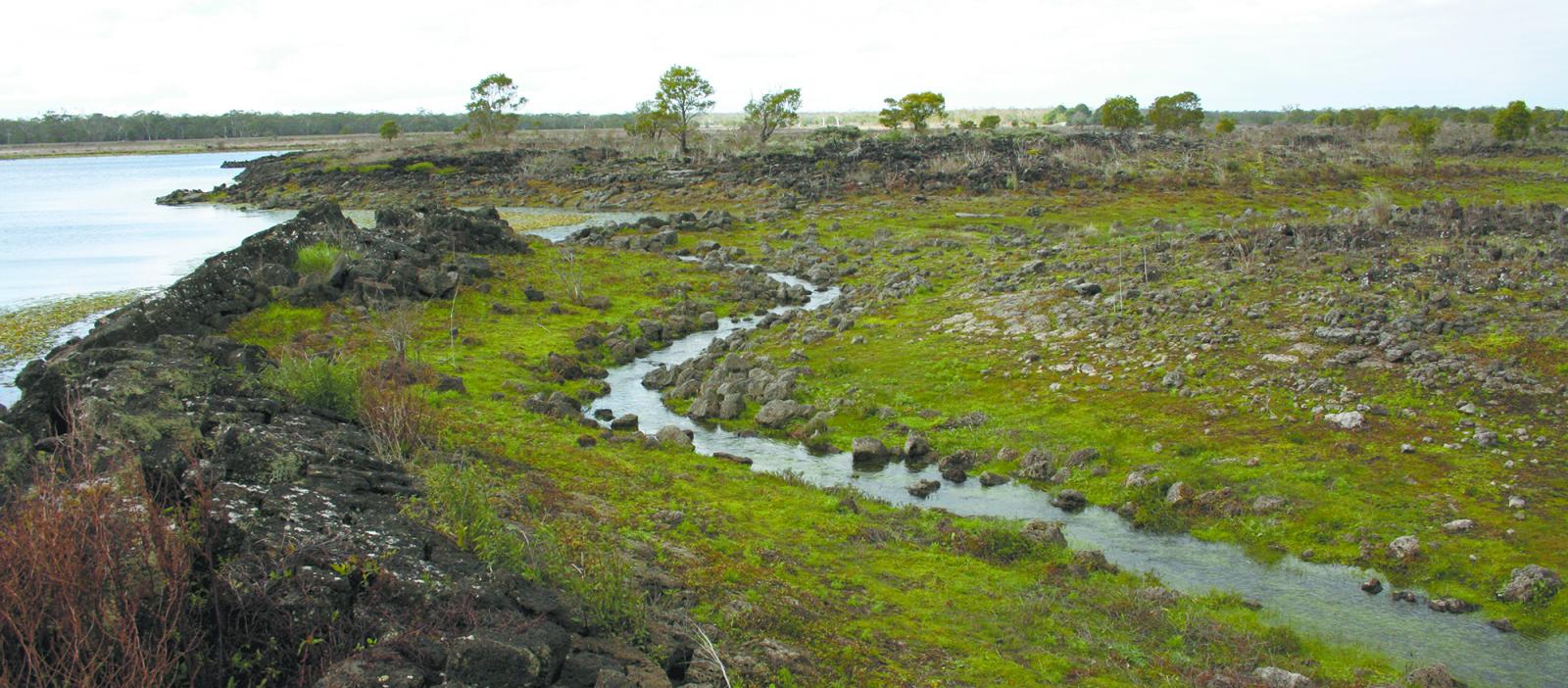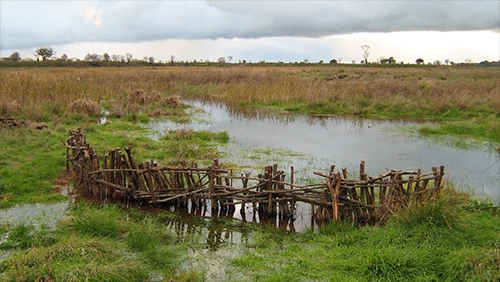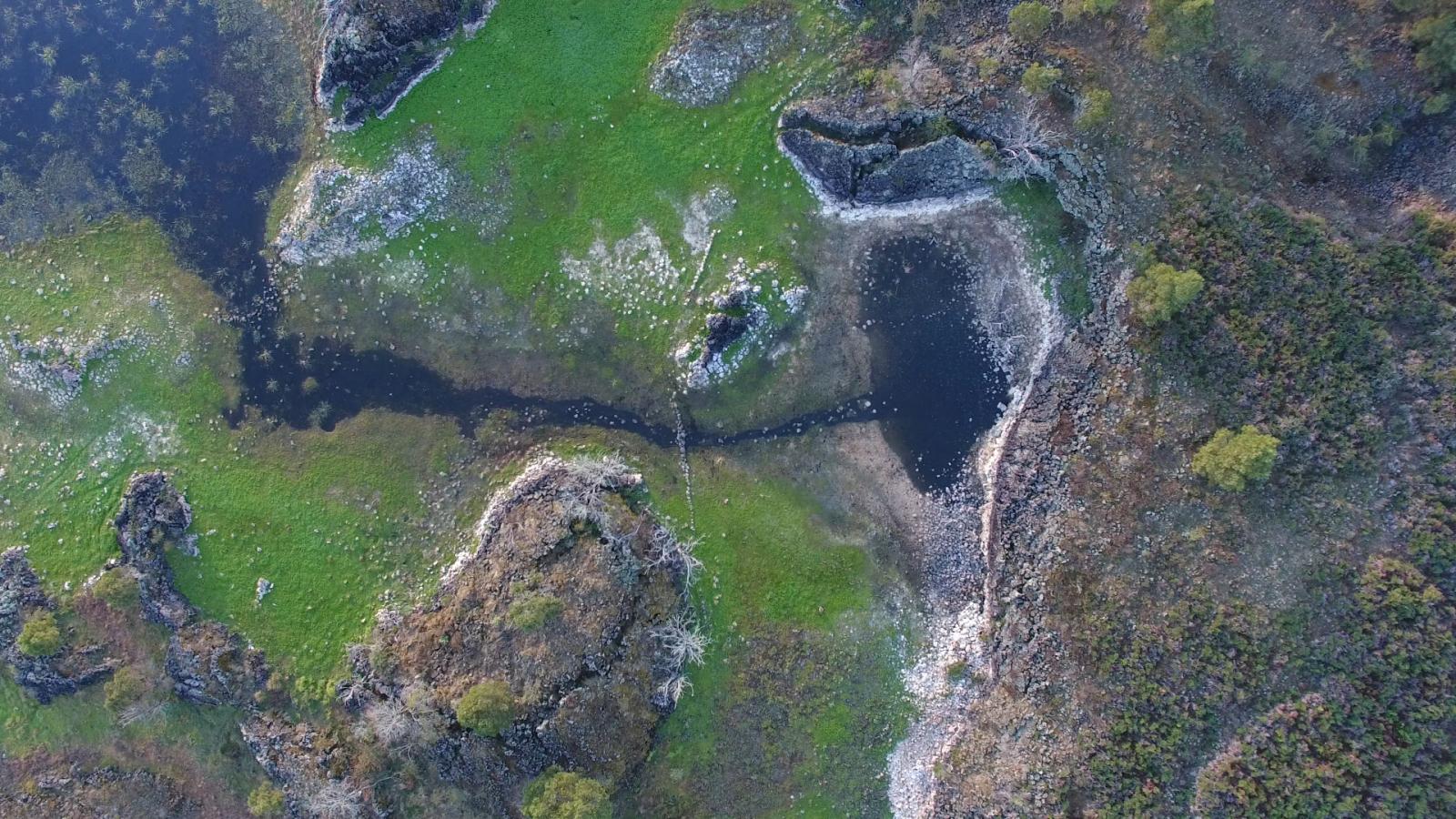Budj Bim is a dormant volcano in South Western Victoria on Gunditjmara Country. The Budj Bim cultural landscape consists of multiple locations such as Lake Condah and the Tyrendarra Indigenous Protected Area.
Budj Bim means High Head in the language of Gunditjmara people and is home to one of oldest aquaculture systems in the world. Budj Bim is said to have erupted over 30,000 years ago and the lava flow that resulted created a system of channels that Gunditjmara people developed into weirs, dams and traps for fish and eels.
Creation Story
Budj Bim ties heavily in to the Dreaming of the Gunditjmara people. It is said that an ancestral creation-being revealed itself in the landscape to the Gunditjmara people. Budj Bim the ancestral creation-being's body, the mountain is the forehead and the stones are the teeth.
“(The Budj Bim landscape), which we have cared for over thousands of years, is so important to Gunditjmara People”- Aunty Denise Lovett, Gunditjmara Elder
To learn more about the creation story check out Dhauwurd Wurrong: The Creation of Budj Bim or you can download the Creation of Budj Bim App.


Lake Condah. Author - Tyson Lovett-Murray © Gunditj Mirring Traditional Owners. Source: UNESCO.
National Park
The Budj Bim National park (formerly Mt Eccles National Park) is located ‘at the western edge of the volcanic plains that stretch from Melbourne to Port Fairy, extending northwards to Hamilton and Ararat.
The park was renamed to Budj Bim in 2017 and was the first national park that was co-managed by Gunditjmara Traditional Owners and Parks Victoria.
The area (originally 35 hectares) was declared a public picnic space in 1921, this then grew to 6120 hectares in 1985 and today the national park extends over 8000 hectares.
Aquaculture and Eel Traps
Budj Bim is home to one of the oldest aquaculture systems in the world. Aquaculture is the farming and breeding of water creatures including fish, eels, shellfish and plants for food and other human use. Aboriginal people are pioneers of aquaculture and there are examples across the Country of sophisticated fish trapping systems that are thousands of years old. Another famous example besides Budj Bim is the Brewarrina Fish Traps on Ngemba Country in NSW.
The Budj Bim eel traps have been in use since the Dreaming and throughout this time they have been rebuilt as needed. As western science is still young and catching up to the complex systems we have used since time immemorial, the eel traps have been dated back to over 6000 years ago.

Image: A channel with reconstructed stake, branch and weir in the Budj Bim Cultural Landscape, SBS News.
Gunditjmara people managed the water flow from Lake Condah, creating dams and blockages to ensure the water flowed as they needed it.
The eel and fish traps supplied enough food to sustain their community all year-round so that they never had to leave and also allowed the Gunditjmara people to trade with other nations.
Gunditjmara people built stone houses and huts to assist with living permanently on the land and today there are over 200 registered and recorded stone houses.
The Budj Bim eel traps and stone houses challenge a long held belief that Aboriginal people were hunters and gatherers who lived a nomadic lifestyle across the land. It shows that we had farming and land management practices and strong economic and agricultural lifestyles.
“There are around 200 registered and recorded stone house sites (at Budj Bim), so people were living a sedentary life” - Uncle Denis Rose, Gunditjmara Elder


Tae Rak channel and holding pond. Author - Tyson Lovett-Murray. © Gunditj Mirring Traditional Owners. Source: UNESCO.
Heritage Listing
The Budj Bim Cultural Landscape was became a part of the National Heritage List on the 20th of July 2004 and almost 15 years later to the day The Budj Bim Cultural Landscape was granted World Heritage Listing. Budj Bim being listed on the world heritage list means the site is recognised as having "outstanding universal value" and is 1 of 19 other locations in Australia that have made the list.
This was a landmark decision as it is one of few places recognised purely for its importance to the First Nations Peoples.
Further Reading
Sources
- Parks Victoria, Budj Bim National Park
- UNESCO, Budj Bim Cultural Landscape
- Visit Melbourne, Budj Bim Cultural Landscape
- The Age, Budj Bim Aboriginal site in western Victoria added to World Heritage list
- The Guardian, Budj Bim Indigenous eel trap site on verge of world heritage listing
- SBS News, Ancient Budj Bim site in southwest Victoria added to World Heritage List
